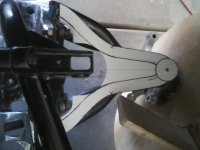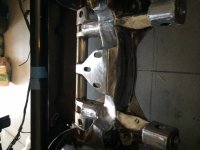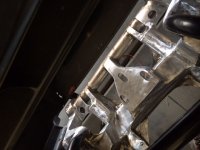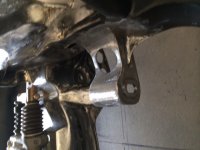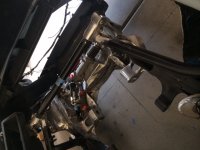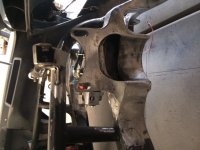69427
The Artist formerly known as Turbo84
I've noticed my '69 and a few other C3s that it looks like the front track width is a bit too narrow for the bodywork. I think the car would look better, and should handle better, with a slightly wider track. IIRC, the stock trackwidth for my vintage is something like 58 3/4 inches, and mine is currently 59 1/4 inches, a quarter inch wider than spec'd on each side (I copied it exactly from the original frame/suspension to minimize the variables in the suspension swap). Anyway, it looks like I could widen the track width another 1/2 to 1 inch (1/4 to 1/2 inch on each side). This should help the handling, and also help reduce the scrub radius a bit with the track wheels and adapters I'm using. I'm planning on welding up an aluminum crossmember in the future, but I might hedge my bet by making the LCA mounts adjustable so that if the wider width doesn't work out I can narrow it back to where I'm at today. There are a few items that concern me with changing the width: bumpsteer, possible tire rubbing, and the best way to make the adjustable area strong enough to not cause me worry on track days.
The bumpsteer issue is the biggy for me. I don't currently know if it's possible to easily change the pivot points on the steering rack. It's a custom width rack, so I'm hoping there might be something in its construction that allowed the manufacturer to make it the width I specified while using a somewhat common (short) ram assembly.
The bumpsteer issue is the biggy for me. I don't currently know if it's possible to easily change the pivot points on the steering rack. It's a custom width rack, so I'm hoping there might be something in its construction that allowed the manufacturer to make it the width I specified while using a somewhat common (short) ram assembly.

